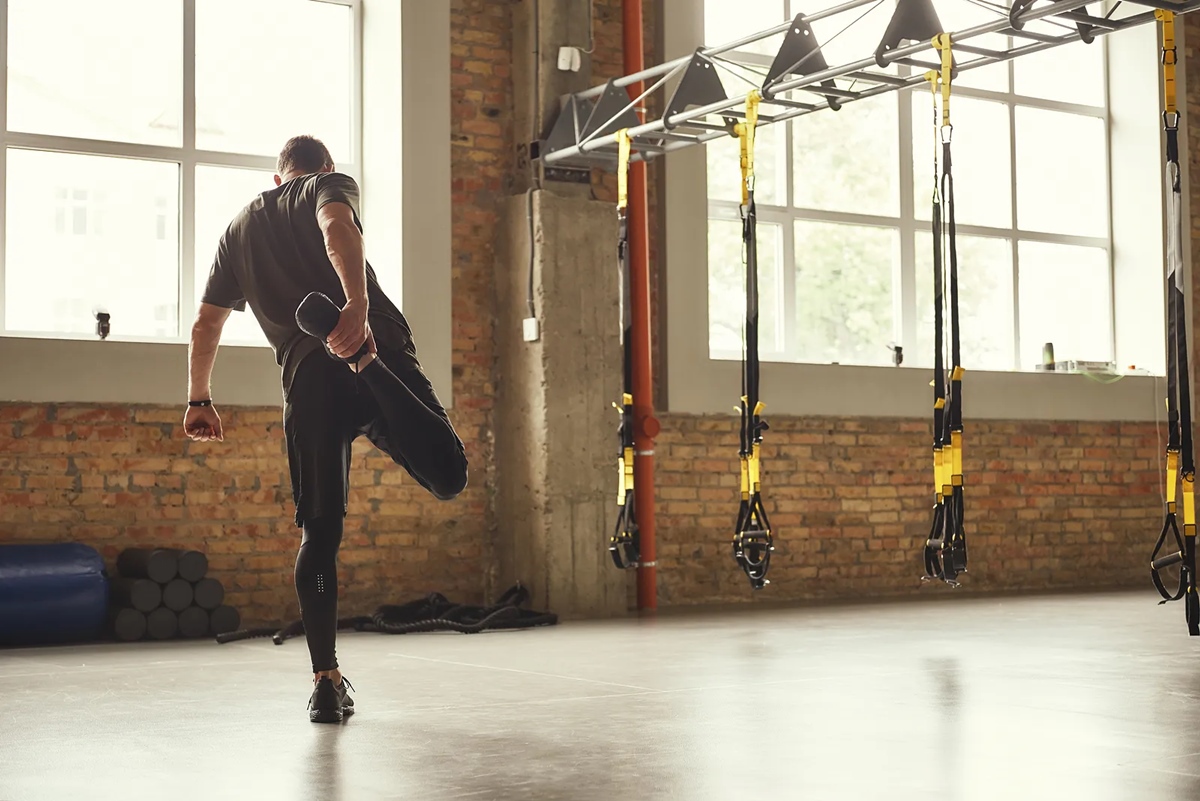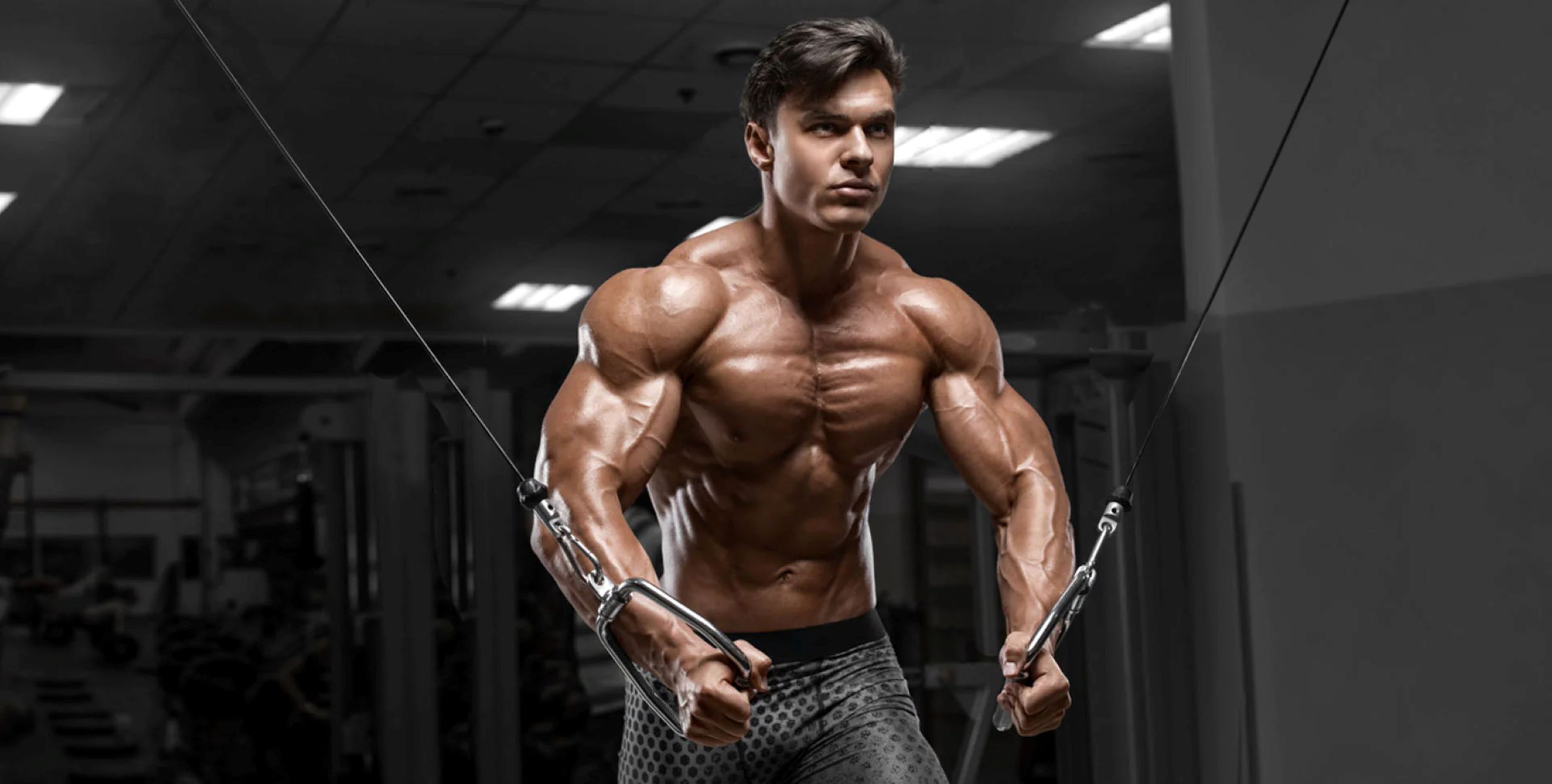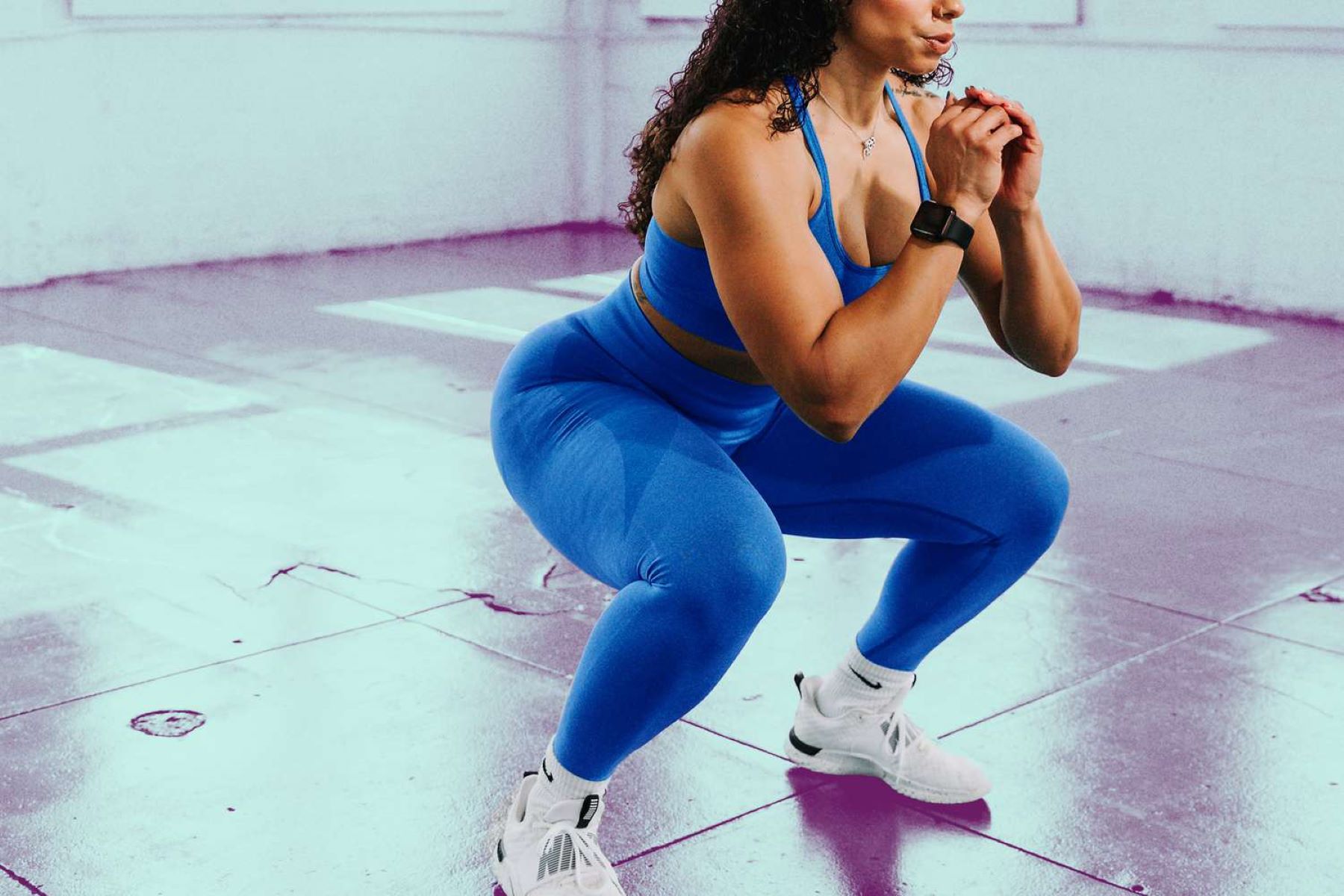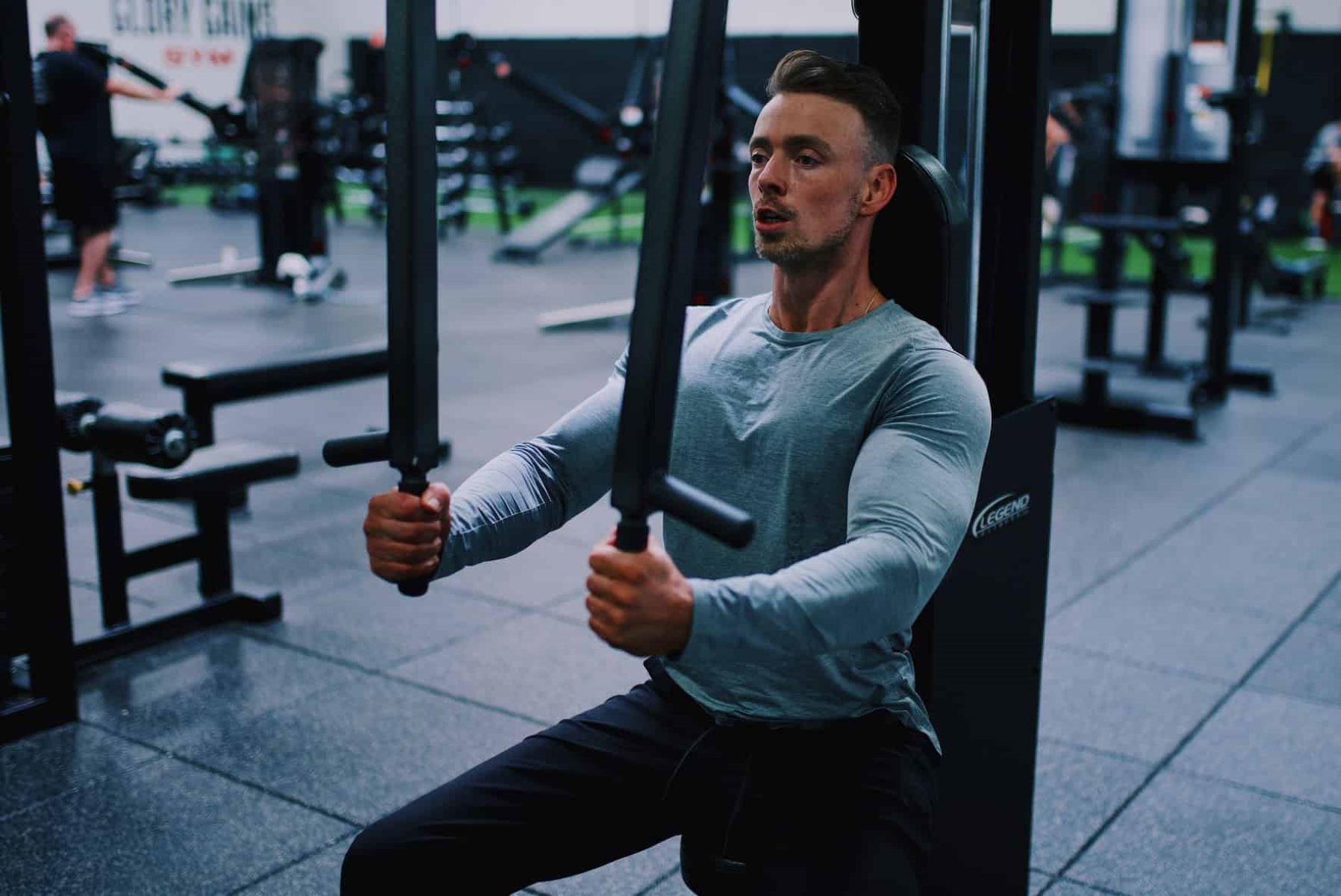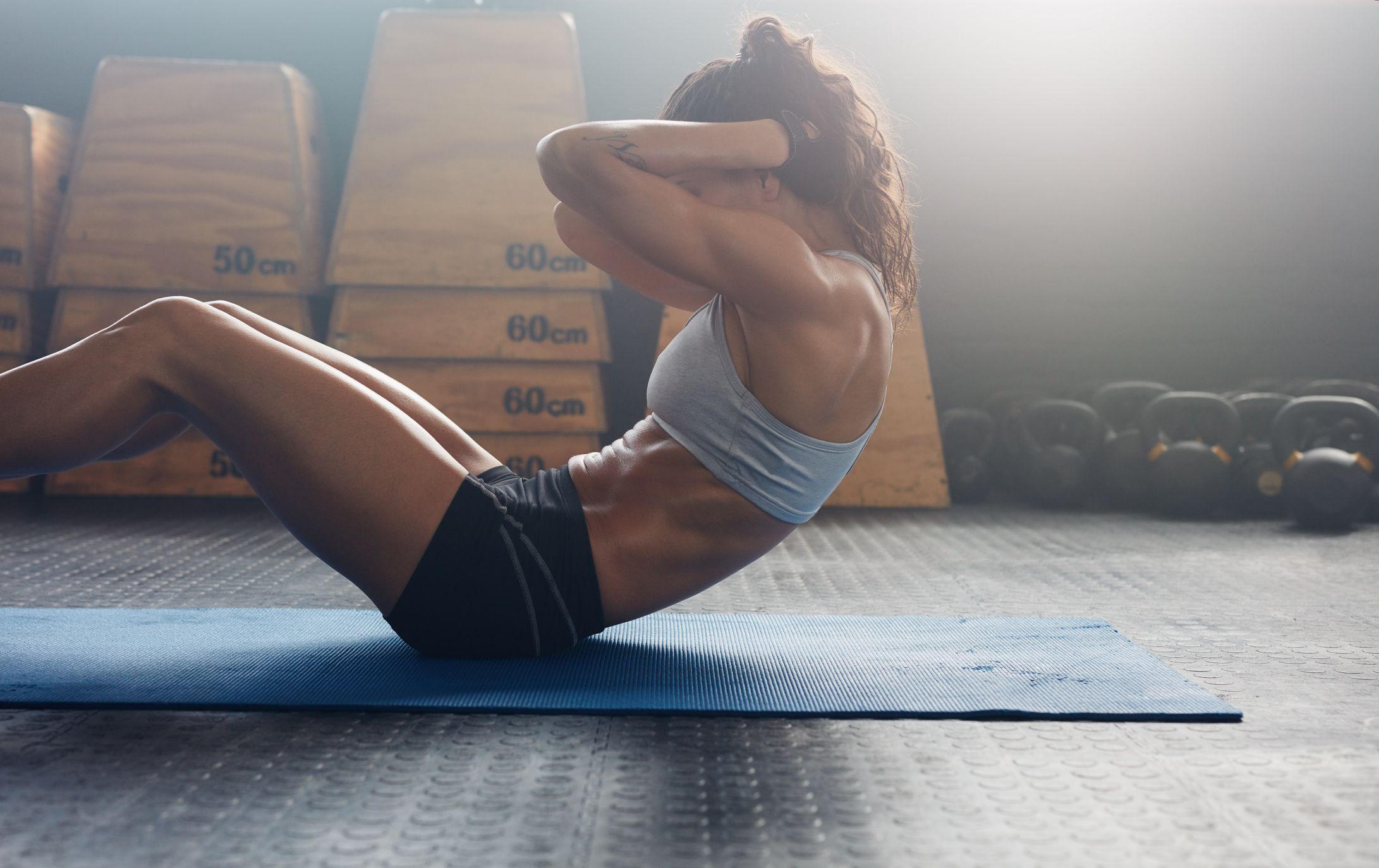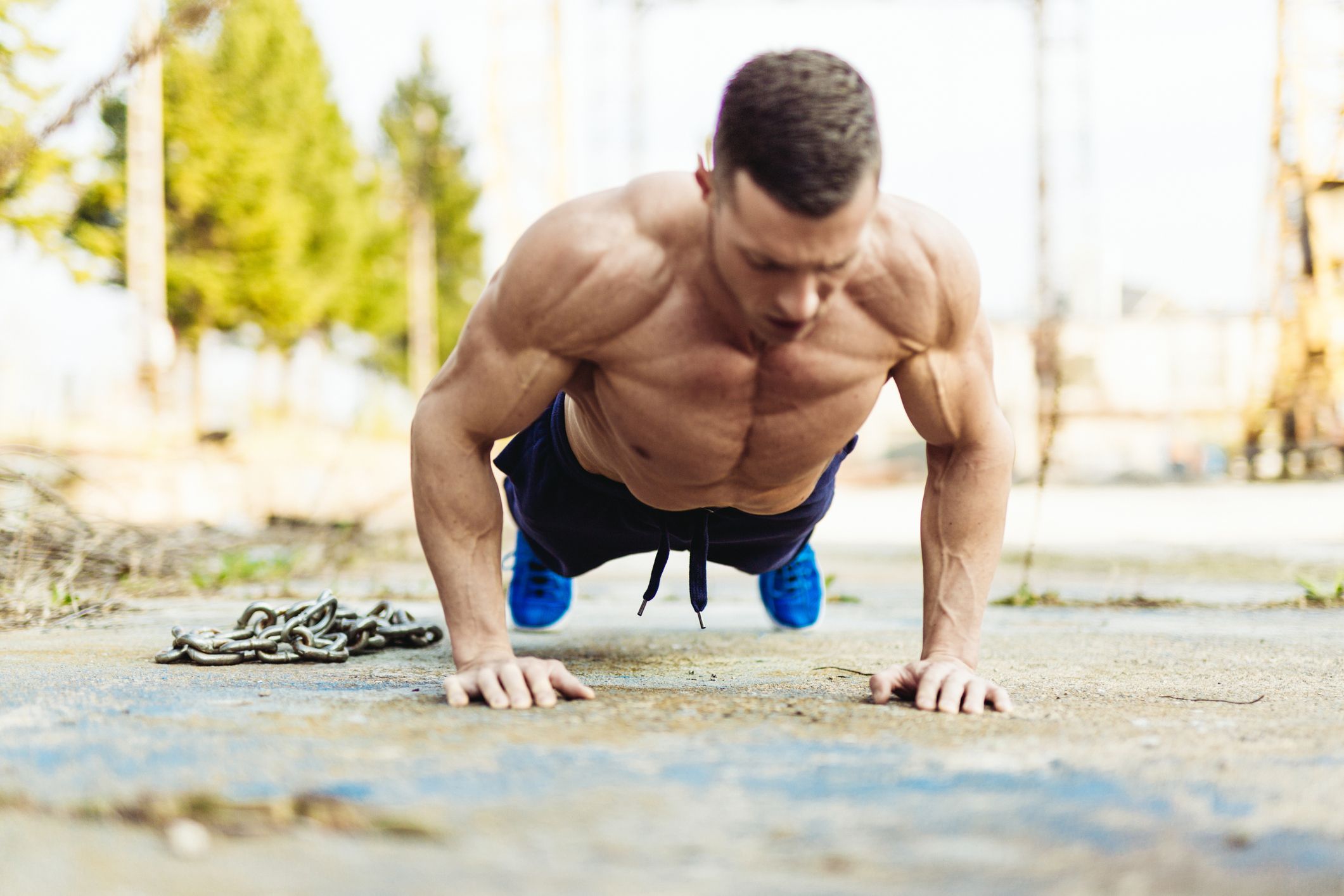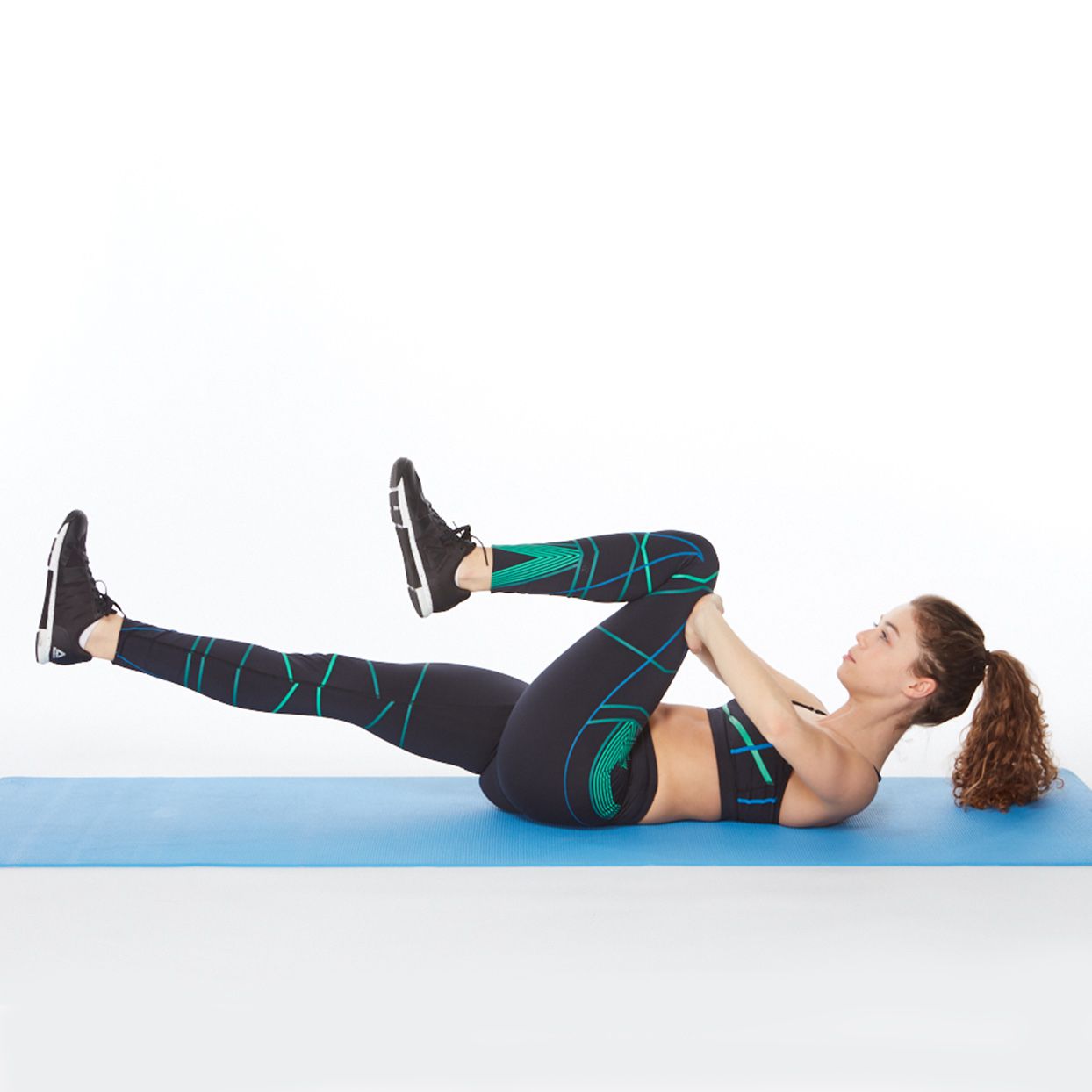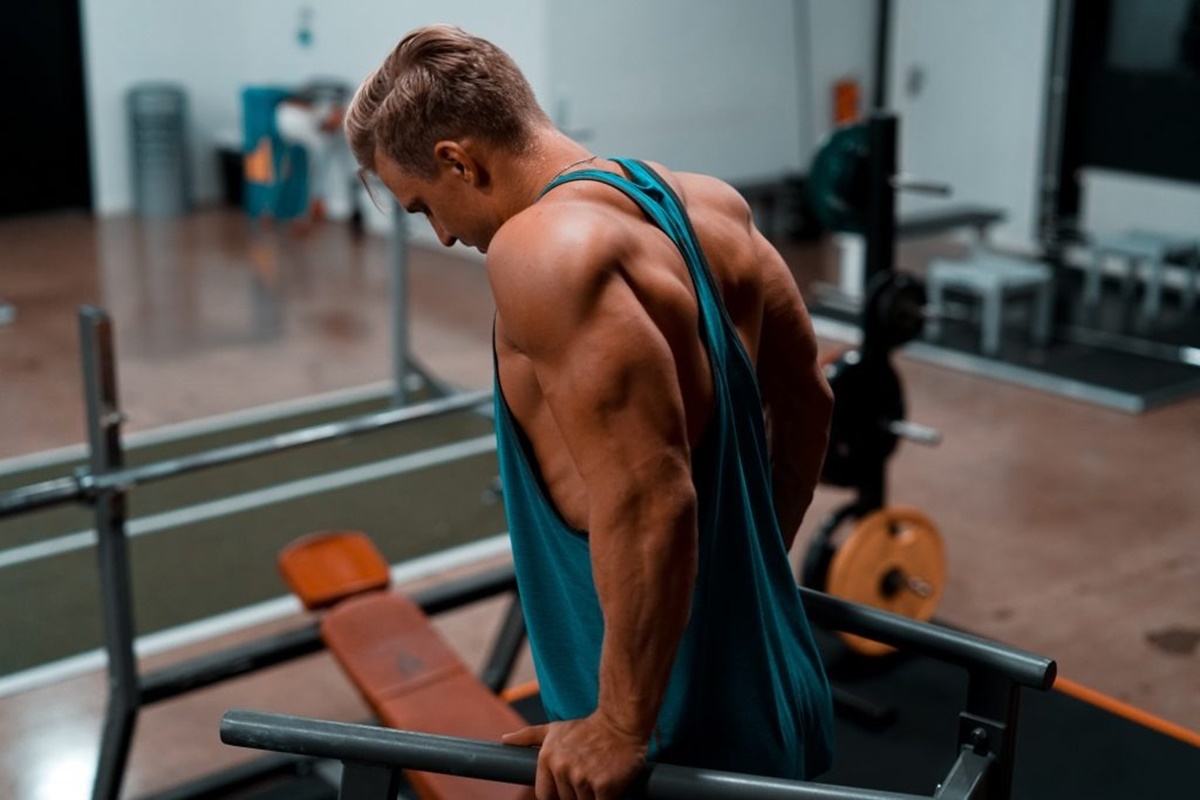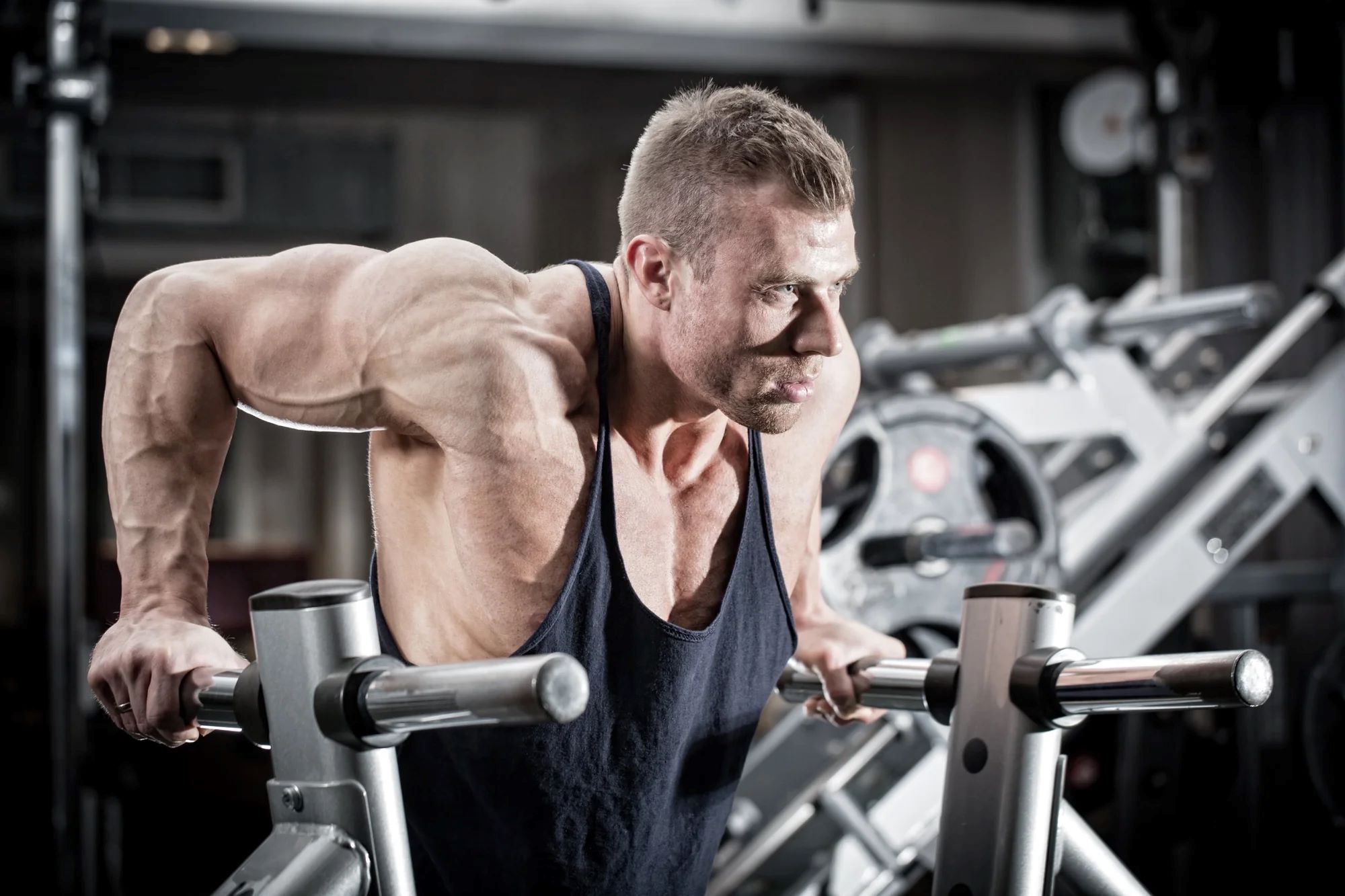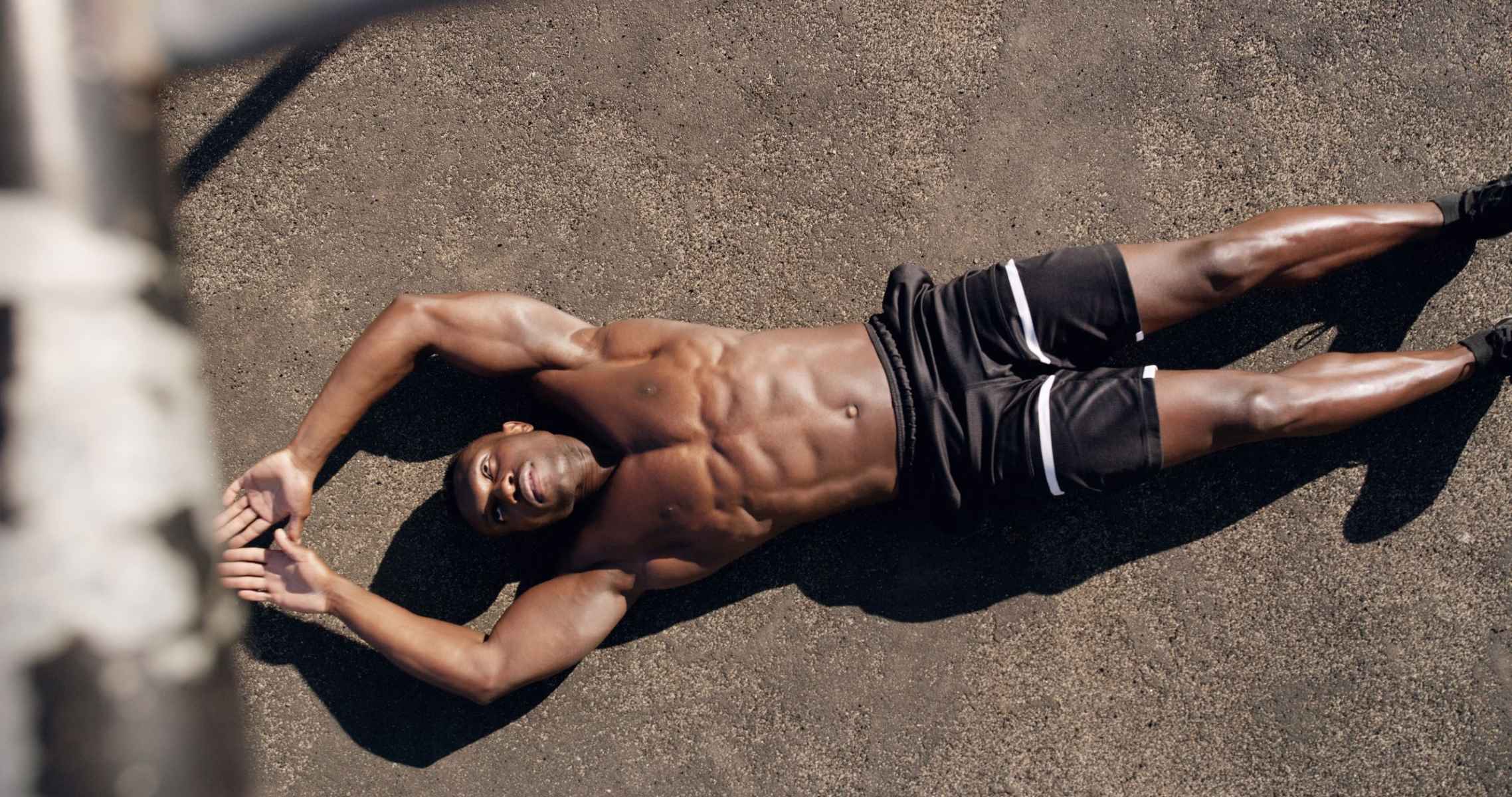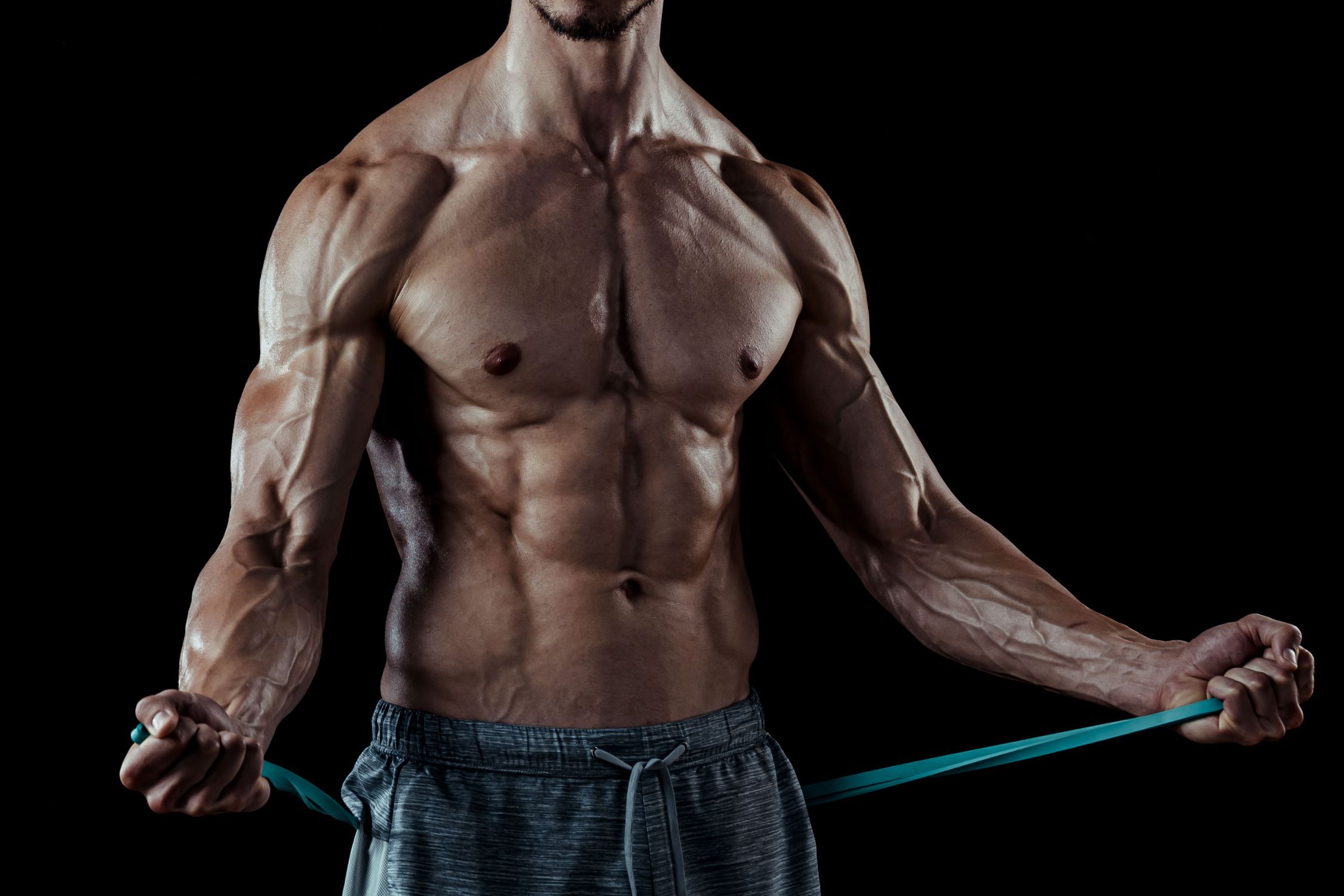

Featured
How To Workout The Lower Chest
Modified: August 19, 2023
Learn how to effectively target and strengthen your lower chest with this featured workout guide. Maximize your gains and achieve a sculpted, well-defined physique.
Introduction
Welcome to the world of fitness, where building a strong and well-defined chest is a common goal for many. While the overall development of the chest is essential, there is a specific area that often gets neglected – the lower chest.
The lower chest refers to the lower portion of the pectoralis major muscle, which is responsible for adduction and extension of the arm. In order to achieve a well-rounded chest, it is crucial to target this area specifically. Neglecting the lower chest can result in an imbalanced appearance and hinder overall chest development.
Developing a strong and defined lower chest not only enhances your physique but also improves your overall upper body strength and performance. By incorporating targeted exercises that focus on the lower chest, you can maximize your chest gains and achieve a well-balanced and proportionate chest.
In this article, we will explore the anatomy of the lower chest, understand the importance of targeting this area, and delve into key exercises that effectively engage and strengthen the lower chest. Additionally, we will provide useful tips to maximize the effectiveness of your lower chest workouts.
So, if you’re ready to take your chest workouts to the next level and achieve a well-defined lower chest, let’s dive in and explore the world of lower chest training!
Anatomy of the Lower Chest
To effectively target the lower chest, it is important to have an understanding of its anatomy. The lower chest is primarily composed of the sternal fibers of the pectoralis major muscle. These fibers originate from the sternum and insert into the humerus bone of the upper arm. The primary function of the lower chest is to adduct the arm towards the midline of the body and to assist in the extension of the arm.
The lower chest is also supported by other muscles, such as the serratus anterior, which helps in stabilizing the scapula during chest exercises. Additionally, the triceps and deltoids also play a secondary role in assisting the lower chest during certain movements.
One key aspect to note about the lower chest is that it has a distinct muscular separation from the upper chest, known as the “chest line” or “cleavage line”. This separation is often sought after by fitness enthusiasts and bodybuilders as it contributes to a well-defined and aesthetic chest.
In terms of muscle activation, research suggests that exercises with a decline angle, such as decline bench press or decline push-ups, tend to elicit greater activity in the lower chest when compared to exercises with a flat or incline angle. This is due to the increased involvement of the sternal fibers of the pectoralis major.
Understanding the anatomy of the lower chest allows us to better target and engage this specific muscle group during our workouts. By incorporating exercises that emphasize the adduction and extension of the arm, we can effectively stimulate growth and development in the lower chest.
Now that we have a good understanding of the anatomy of the lower chest, let’s explore why targeting this area is crucial for overall chest development and aesthetics.
Importance of Targeting the Lower Chest
When it comes to chest development, it is crucial to target the lower chest for several reasons. Focusing on the lower chest not only enhances the aesthetics of your chest, but also improves upper body strength, muscle balance, and overall performance.
First and foremost, working on the lower chest helps create a well-rounded and proportionate chest. By giving attention to this area, you can achieve better muscle symmetry and a balanced chest appearance. Neglecting the lower chest can lead to an imbalance between the upper and lower portions of the chest, resulting in a less defined and less aesthetic physique.
In addition to aesthetics, targeting the lower chest is essential for building upper body strength. The lower chest muscles play a significant role in various pushing movements, such as bench presses, push-ups, and dips. By developing a strong lower chest, you can enhance your performance in these exercises and increase your overall pushing power.
Furthermore, working on the lower chest can help improve muscle balance. Many individuals tend to have a stronger upper chest compared to their lower chest due to overemphasis or neglect of certain exercises. This muscle imbalance can lead to poor posture and even shoulder issues. By focusing on the lower chest, you can correct this imbalance and promote better muscle symmetry and joint stability.
Targeting the lower chest also contributes to functional strength and everyday activities. The movements involved in developing the lower chest muscles, such as adduction and extension of the arm, are essential for activities in which pushing and lifting motions are required. By strengthening the lower chest, you can improve your ability to perform daily tasks with ease, whether it’s lifting heavy objects, pushing a door open, or carrying groceries.
Finally, a well-developed lower chest can enhance athletic performance. Many sports, such as basketball, football, and martial arts, involve powerful pushing and striking movements. By targeting the lower chest, you can improve your explosive strength and generate more force, ultimately enhancing your performance on the field or in the ring.
Now that we understand the importance of targeting the lower chest, let’s explore some key exercises that effectively engage and strengthen this area.
Key Exercises for the Lower Chest
When it comes to targeting the lower chest, incorporating specific exercises into your workout routine is vital. These exercises effectively engage and activate the lower chest muscles, helping you achieve a well-defined and proportionate chest.
- 1. Decline Bench Press: The decline bench press is a staple exercise for targeting the lower chest. By performing this exercise on a decline bench, you shift the focus onto the lower chest muscles. Lowering the barbell or dumbbells towards the lower part of your chest allows for maximum engagement of the lower chest fibers.
- 2. Low Cable Crossover: The low cable crossover is another effective exercise for targeting the lower chest. Set the cable pulleys to the lowest position and bring your hands together in a crossover motion, focusing on squeezing the lower chest muscles throughout the movement. This exercise provides constant tension on the lower chest, promoting muscle growth and definition.
- 3. Dips: Dips are a compound exercise that targets the entire chest, with a significant emphasis on the lower chest. Performing dips with a forward lean and elbows flared out targets the lower chest muscles. If you find regular dips too challenging, you can use assisted dip machines or resistance bands to gradually build strength.
- 4. Decline Push-Ups: Decline push-ups are a bodyweight exercise that effectively targets the lower chest. Place your feet on an elevated surface, such as a bench or step, and perform push-ups in a decline position. This angle increases the activation of the lower chest muscles. To increase the intensity, you can add a weight plate on your back or use a weighted vest.
- 5. Dumbbell Pullover: The dumbbell pullover primarily targets the chest and back muscles, but when performed with a slight decline angle, it places a greater emphasis on the lower chest. Lie on a decline bench with a dumbbell in both hands, and lower the weights behind your head while keeping a slight bend in your elbows. Focus on feeling the stretch in the lower chest as you raise the dumbbells back to the starting position.
Remember to perform each exercise with proper form and technique. Start with a weight that allows you to maintain proper form and gradually increase the weight as you progress. Additionally, include a variety of these exercises in your routine to continually challenge your muscles and stimulate growth.
Now that we’ve covered the key exercises for targeting the lower chest, let’s explore some helpful tips to make your lower chest workouts even more effective.
Decline Bench Press
The decline bench press is a fundamental exercise for targeting the lower chest and should be a staple in any chest-focused workout routine. This exercise allows you to specifically target the lower chest by adjusting the angle of the bench, shifting the focus onto the lower portion of the pectoralis major muscle.
To perform the decline bench press:
- Adjust the decline bench to a comfortable angle, typically around 30 to 45 degrees.
- Lie down on the bench with your feet securely locked into place and your back fully supported.
- Grip the barbell or dumbbells slightly wider than shoulder-width apart, with your palms facing forward.
- Unrack the weight and lower it to your lower chest while maintaining control and stability.
- As you push the weight back up, focus on contracting your lower chest muscles to fully engage them.
- Complete the desired number of repetitions, ensuring proper form throughout the exercise.
When performing the decline bench press, it is important to keep a few tips in mind:
- Focus on maintaining a controlled eccentric (lowering) phase, as this is where the lower chest muscles are most engaged.
- Avoid arching your back excessively, as this can shift the emphasis from the lower chest to other muscles.
- Engage your core and maintain stability throughout the entire movement.
- If you are a beginner or have any shoulder issues, it is advisable to start with lighter weights or use a machine until you develop sufficient upper body strength and stability.
Incorporating the decline bench press into your chest workout routine will help you effectively target and develop your lower chest muscles. Remember to start with an appropriate weight based on your strength and gradually increase the resistance as you progress.
Now that we’ve covered the decline bench press, let’s move on to another effective exercise for targeting the lower chest – the low cable crossover.
Low Cable Crossover
The low cable crossover is an excellent exercise for isolating and targeting the lower chest muscles. By performing this exercise, you can achieve a deep stretch and a focused contraction in the lower chest, promoting muscle growth and definition.
To perform the low cable crossover:
- Set the cable pulleys to the lowest position and attach a D-handle to each cable.
- Stand in the center of the cable machine, with one foot slightly in front of the other for stability.
- Grasp the D-handles and step forward, creating tension in the cables.
- Keep a slight bend in your elbows and position your hands so that your palms are facing forward.
- Engage your core, maintain good posture, and keep your chest up throughout the exercise.
- While maintaining a slight bend in your elbows, bring your hands towards the midline of your body in a controlled and squeezing motion.
- Focus on squeezing the lower chest muscles at the peak of the movement.
- Slowly release the tension and return to the starting position.
- Repeat for the desired number of repetitions, ensuring proper form and control.
There are a few important tips to consider when performing the low cable crossover:
- Keep a consistent and controlled motion throughout the exercise. Avoid using momentum or swinging the weights.
- Focus on maintaining tension in the lower chest throughout the entire range of motion.
- Don’t forget to breathe properly, exhaling as you bring your hands together and inhaling as you release the tension.
- Adjust the cable height and handle position to find the optimal angle and range of motion that targets your lower chest effectively.
By incorporating the low cable crossover into your chest workout routine, you can effectively isolate and stimulate your lower chest muscles. Remember to start with an appropriate weight and focus on proper form and control to get the most out of this exercise.
Now that we’ve covered the low cable crossover, the next exercise we will explore is dips, a compound movement that heavily engages the lower chest muscles.
Dips
Dips are a compound exercise that targets multiple muscle groups, including the chest, triceps, and shoulders. When performed with the proper form and technique, dips can effectively engage and strengthen the lower chest muscles.
To perform dips:
- Find a set of parallel bars or use dip bars on a dip station.
- Stand between the bars and grip each bar with an overhand grip.
- Jump or step up, supporting your body weight with your arms, and lock your elbows in a fully extended position.
- Lean your torso slightly forward and engage your core for stability.
- Bend your elbows and lower your body until your shoulders are slightly below your elbows or until you feel a stretch in your chest.
- Push through your palms and extend your elbows to return to the starting position, focusing on contracting your chest muscles.
- Repeat for the desired number of repetitions, ensuring proper form and control throughout the movement.
Here are a few tips to keep in mind when performing dips:
- Keep your shoulders down and back, avoiding shrugging or hunching them forward.
- Maintain a smooth and controlled motion, focusing on the contraction of the lower chest muscles during the lifting phase.
- Engage your core and maintain stability throughout the exercise to avoid swinging or excessive momentum.
- If you’re new to dips or find them challenging, you can use an assisted dip machine or resistance bands to gradually build strength.
Incorporating dips into your chest workout routine is an effective way to target and strengthen the lower chest muscles. As you progress, you can also explore different variations of dips, such as weighted dips or chest-focused dips, to continue challenging your lower chest muscles.
Now that we’ve covered dips, let’s move on to another exercise that targets the lower chest – decline push-ups.
Decline Push-Ups
Decline push-ups are a bodyweight exercise that effectively targets the lower chest muscles. By elevating your feet on an elevated surface, such as a bench or step, you increase the difficulty and place a greater emphasis on the lower chest.
To perform decline push-ups:
- Place your hands shoulder-width apart on the floor, slightly wider than your shoulders.
- Position your feet on an elevated surface, such as a bench or step, forming a plank position with your body.
- Engage your core and ensure a straight line from your head to your heels.
- Lower your chest towards the floor, keeping your elbows slightly tucked in.
- Pause for a moment when your chest is near the ground, then push through your palms to lift your body back up to the starting position.
- Continue for the desired number of repetitions, maintaining proper form and control throughout.
Here are some tips to consider when performing decline push-ups:
- Maintain a slow and controlled tempo throughout the exercise, focusing on the contraction of the lower chest muscles during the pushing phase.
- Keep your body in a straight line and avoid sagging or arching your back.
- Engage your core and squeeze your glutes to maintain proper alignment and stability.
- If standard decline push-ups are too challenging, you can modify the exercise by performing push-ups with your hands on an elevated platform instead of your feet.
Adding decline push-ups to your chest routine provides an effective way to target and engage the lower chest muscles without requiring any equipment. As you progress, you can make the exercise more challenging by adding a weighted vest or placing your hands on unstable surfaces, such as medicine balls.
Now that we’ve covered decline push-ups, let’s move on to another exercise that effectively engages the lower chest – the dumbbell pullover.
Dumbbell Pullover
The dumbbell pullover is a versatile exercise that primarily targets the chest and back muscles. When performed with a slight decline angle, this exercise can effectively engage and stimulate the lower chest muscles.
To perform the dumbbell pullover:
- Lie down on a decline bench with your upper back and head positioned on the bench, your feet flat on the ground, and your knees bent.
- Hold a dumbbell with both hands, keeping a firm grip and holding it vertically with your palms facing up.
- Begin with your arms fully extended above your chest, perpendicular to the floor.
- Lower the dumbbell in a controlled manner behind your head, maintaining a slight bend in your elbows.
- Feel the stretch in your chest as you lower the dumbbell, and then raise it back to the starting position by using your chest and keeping your arms relatively straight.
- Squeeze your lower chest muscles as you bring the dumbbell back up, focusing on the contraction and control.
- Complete the desired number of repetitions with proper form and controlled tempo.
To optimize the effectiveness of the dumbbell pullover:
- Focus on maintaining a strong connection between your lower chest and the movement of the dumbbell.
- Keep your core engaged and your back firmly pressed against the bench to maintain stability.
- Avoid excessive arching of your lower back and any jerking or swinging motions.
- Ensure a full range of motion by lowering the dumbbell until you feel a stretch in your chest without straining your shoulders or neck.
The dumbbell pullover is a great addition to any chest workout routine, targeting the lower chest muscles while also engaging the back muscles. As with any exercise, start with a comfortable weight and gradually increase as you build strength and confidence.
Now that we’ve covered the dumbbell pullover, let’s move on to some helpful tips to maximize the effectiveness of your lower chest workouts.
Tips for Effective Lower Chest Workouts
To maximize the effectiveness of your lower chest workouts and achieve the desired results, consider the following tips:
- Focus on proper form: Performing exercises with correct form ensures optimal muscle activation and reduces the risk of injury. Pay attention to your posture, range of motion, and muscle engagement during every rep.
- Vary your angles: Incorporating exercises with different angles, such as decline, flat, and incline variations, can target and engage different portions of the chest muscles, including the lower chest. This helps promote well-rounded development.
- Progressive overload: To continuously challenge your muscles and stimulate growth, gradually increase the resistance or intensity of your workouts. This can be achieved by adding weights, increasing repetitions, or reducing rest time between sets.
- Train consistently: Consistency is key when it comes to achieving results. Aim for regular, dedicated workouts that target your lower chest at least 2-3 times per week to see noticeable improvements.
- Include other chest exercises: While targeting the lower chest is important, don’t neglect the rest of your chest muscles. Incorporate a variety of exercises, such as flat and incline presses, to ensure balanced development and overall chest aesthetics.
- Engage other muscle groups: Strengthening supporting muscles, such as the triceps, shoulders, and back, can contribute to better overall chest development and stability during lower chest exercises. Incorporate exercises that target these muscle groups into your routine.
- Use progressive resistance techniques: Implementing techniques such as drop sets, supersets, and rest-pause training can help challenge your muscles in different ways and stimulate growth in the lower chest.
- Listen to your body: Pay attention to how your body responds to certain exercises and adjust your routine accordingly. If you experience pain or discomfort, modify the exercise or seek guidance from a fitness professional.
- Prioritize recovery: Allow time for your muscles to recover and grow by including rest days in your workout routine. Get enough sleep, eat a balanced diet, and stay hydrated to support muscle repair and growth.
By implementing these tips into your lower chest workouts, you can optimize your training and make significant progress in developing a well-defined lower chest. Remember that consistency, proper form, and progressive overload are key factors in achieving your fitness goals.
Now that we’ve explored these helpful tips, let’s wrap up our discussion on the importance of targeting the lower chest.
Conclusion
Targeting the lower chest is crucial for achieving a well-rounded, proportionate, and defined chest. By focusing on this often-neglected area, you can enhance both the aesthetics and functionality of your chest muscles.
We explored the anatomy of the lower chest, understanding its role in arm adduction and extension. Through exercises like the decline bench press, low cable crossover, dips, decline push-ups, and dumbbell pullover, you can effectively engage and strengthen the lower chest muscles.
Incorporating these exercises into your chest workout routine, along with proper form, progressive overload, and consistency, will help you achieve your desired results. Varying angles, engaging other muscle groups, and using progressive resistance techniques are also key factors in maximizing the effectiveness of your lower chest workouts.
Remember to listen to your body, prioritize recovery, and keep a holistic approach to your fitness journey. Consistency, dedication, and patience are essential in any fitness endeavor.
So, if you’re looking to build a well-defined lower chest, enhance your upper body strength, improve muscle balance, and boost your athletic performance, prioritize targeting the lower chest in your workouts. Don’t neglect this important muscle group, and enjoy the benefits of a well-developed and aesthetically pleasing chest.
